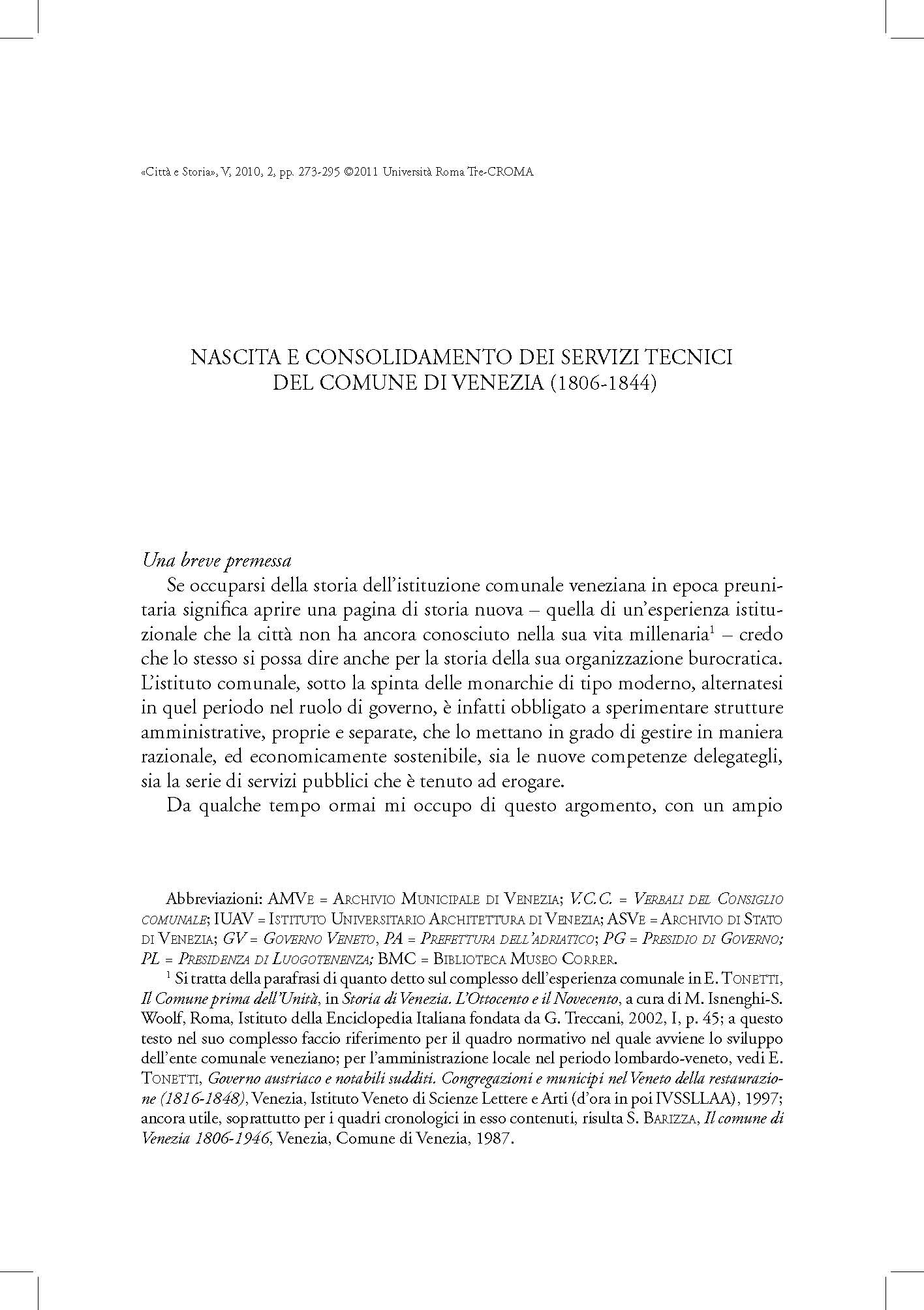Nascita e consolidamento dei servizi tecnici del Comune di Venezia (1806-1844)
6,00 €
This essay focuses on the first half of the nineteenth century. A period in which the city
of Venice, through dynamic, at times conflictual relationships, first with the French and then
with the Austrian governments, built and consolidated a modern bureaucratic structure. In
this same period, technical services acquired greater relevance within the overall organization
and therefore a more complex and intricate organizational structure. This process however,
wasn’t determined by a complex of organic reforms prepared in advance, but rendered inescapable
by the necessity of dealing with emergency situations. The Napoleonic plan’s attempt
to redefine the urban space through costly, large-scale projects was followed by the Habsburg
modernization program through regular maintenance with an eye on the budget. Two very
contrasting approaches, indicators of the change over time of the systems of conceiving city
government. The end appears the same however, that of satisfying the requests of real estate
owners to increase the value of their property through the modernization of road infrastructure.
This essay focuses on the first half of the nineteenth century. A period in which the city
of Venice, through dynamic, at times conflictual relationships, first with the French and then
with the Austrian governments, built and consolidated a modern bureaucratic structure. In
this same period, technical services acquired greater relevance within the overall organization
and therefore a more complex and intricate organizational structure. This process however,
wasn’t determined by a complex of organic reforms prepared in advance, but rendered inescapable
by the necessity of dealing with emergency situations. The Napoleonic plan’s attempt
to redefine the urban space through costly, large-scale projects was followed by the Habsburg
modernization program through regular maintenance with an eye on the budget. Two very
contrasting approaches, indicators of the change over time of the systems of conceiving city
government. The end appears the same however, that of satisfying the requests of real estate
owners to increase the value of their property through the modernization of road infrastructure.

